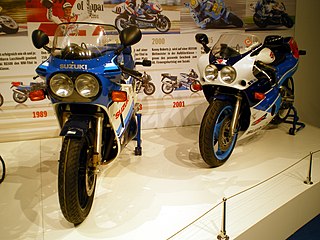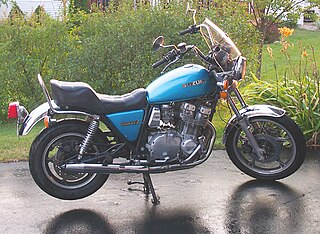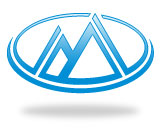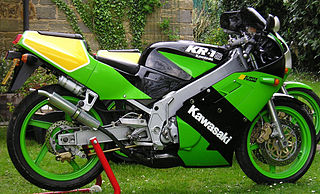
Grand Prix motorcycle racing is the highest class of motorcycle road racing events held on road circuits sanctioned by the Fédération Internationale de Motocyclisme (FIM). Independent motorcycle racing events have been held since the start of the twentieth century and large national events were often given the title Grand Prix. The foundation of the Fédération Internationale de Motocyclisme as the international governing body for motorcycle sport in 1949 provided the opportunity to coordinate rules and regulations in order that selected events could count towards official World Championships. It is the oldest established motorsport world championship.
Yamaha Motor Co., Ltd. is a Japanese mobility manufacturer that produces motorcycles, motorboats, outboard motors, and other motorized products. The company was established in the year 1955 upon separation from Nippon Gakki Co., Ltd. and is headquartered in Iwata, Shizuoka, Japan. The company conducts development, production and marketing operations through 109 consolidated subsidiaries as of 2012.
The Honda XR series is a range of four-stroke off-road motorcycles that were designed in Japan but assembled all over the world.

Suzuki GSX-R is a series of sports motorcycles made by Japanese automotive manufacturer Suzuki since 1984.

The term "Universal Japanese Motorcycle", or UJM, was coined in the mid-1970s by Cycle Magazine to describe a proliferation of similar Japanese standard motorcycles that became commonplace following Honda's 1969 introduction of its successful CB750. The CB750 became a rough template for subsequent designs from all three of the other major Japanese motorcycle manufacturers. In 2011, the New York Times said lightning struck for Honda "with the 1969 CB 750, whose use of an inline 4-cylinder engine came to define the Universal Japanese Motorcycle."

The Suzuki GS series was Suzuki Motor Corporation's first full range of 4-stroke powered road motorcycles, having previously almost exclusively manufactured 2-stroke machines. Suzuki had produced the 4-stroke Colleda COX 125cc and 93cc 4-stroke single-cylinder machines in 1955 however the rest of Suzuki's production from 1952 to 1976 had been increasingly sophisticated two-stroke road machines, whose ultimate expression was the 750cc 3-cylinder water-cooled GT750.

Syarikat Motosikal dan Enjin Nasional Sdn. Bhd, or known as Modenas for short is a Malaysian national motorcycle company producing various small motorcycle models below 400cc targeted for local market and export. The company's headquarters and factory are located at the small town of Gurun, Kedah, Malaysia.

A motorcycle engine is an engine that powers a motorcycle. Motorcycle engines are typically two-stroke or four-stroke internal combustion engines, but other engine types, such as Wankels and electric motors, have been used.

The Yamaha RZ350 is a two-stroke motorcycle produced by Japanese motorcycle manufacturer Yamaha between 1983 and 1996. Available in the US from 1983-1985, Canada until 1990 and Brazil until 1996. The RZ was the final evolution of the popular and well-known series of RD Yamaha motorcycles, and as such is also known as the RD350LC II or RD350 YPVS.

The Suzuki Boulevard S40 is a lightweight cruiser motorcycle manufactured by the Suzuki Motor Corporation for the Japanese domestic market, and exported to New Zealand, North America, as well as to Chile and other countries.

The 1979 Grand Prix motorcycle racing season was the 31st F.I.M. Road Racing World Championship season.

The Kawasaki triples were a range of 250 to 750 cc motorcycles made by Kawasaki from 1968 to 1980. The engines were air-cooled, three-cylinder, piston-controlled inlet port two-strokes with two exhaust pipes exiting on the right side of the bike, and one on the left. It was the first production street motorcycle with capacitor discharge ignition (CDI). Right from the first triple model, the 1968 Mach III H1 500 cc, it was a sales success that gained a reputation for almost unmatched acceleration as well as an air of danger for inexperienced riders trying to cope with the bike's increased power to weight ratio over any previously available stock motorcycles.

Yamaha TD2 is an air-cooled road racing motorcycle made by Yamaha produced between 1969 and 1970. The equivalent 350cc version was called TR2

The Honda RS250R was a race motorcycle manufactured by Honda to race in the 250cc class of the Grand Prix motorcycle World Championship. It was conceived as a production racer for customer teams and privateer riders, while factory-supported teams raced the works bikes RS250RW and NSR250.

The Kawasaki KR-1 and KR-1S are road-orientated 249 cc (15.2 cu in) two-stroke sports bikes introduced between 1988 and 1992 by Kawasaki Heavy Industries.

The Kawasaki H1 Mach III was a two-stroke 500 cc sport bike made by Kawasaki from 1969 through to 1975.

The Suzuki GSX-R1100 is a sport bike from Suzuki's GSX-R series of motorcycles produced from 1986 until 1998.

The Honda CBR250F is a CBR series 250 cc (15.3 cu in) four-cylinder sport bike made by Honda. The CBR250F was first sold in Japan in 1986. The CBR250RR MC22 was discontinued in 1996 in Japan, but sales continued in Australia until 2000
















